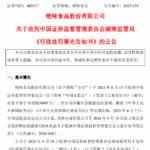Service trade is an important component of international trade. Accelerating the development of service trade is essential for expanding high-level openness and fostering new drivers of foreign trade growth.
Latest data released on August 4 shows that in the first half of the year, the total volume of service trade reached 3,887.26 billion yuan, an increase of 8% year-on-year. Exports amounted to 1,688.3 billion yuan, up 15.0%, while imports reached 2,198.96 billion yuan, rising by 3.2%. Knowledge-intensive service trade grew by 6%, with telecommunications, computer, and information services showing significant import and export activity, totaling 529.38 billion yuan, a growth of 12.7%.
The highlights of service trade in the first half of the year include steady expansion in import and export volume, exports growing significantly faster than imports, and further optimization of trade structure.
“Specifically, service exports grew by 15%, significantly outpacing import growth. The service trade deficit narrowed sharply year-on-year, reflecting the continuous improvement in the competitiveness of service trade. Exports in digital services, tourism services, and financial services all performed strongly. Meanwhile, the import and export of knowledge-intensive services saw notable growth, with their structural share continuing to rise, becoming a key driver of high-quality service trade development.”
Travel Services Emerge as the Largest Sector in Service Trade
Travel services stood out as a major highlight in the first half of the year. Data shows that travel services maintained rapid growth, with imports and exports reaching 1,080.29 billion yuan, up 12.3%, making it the largest sector in service trade. Exports surged by 68.7%, while imports grew by 5.5%.
The rapid growth in tourism service trade was attributed to the accelerated recovery of domestic and international mobility, the gradual reopening of outbound tourism, and a noticeable rebound in inbound tourism.
On one hand, as international flight capacity recovered, demand for overseas travel and study by Chinese residents was quickly released. On the other hand, expanded visa-free policies and improved convenience for foreigners visiting China boosted inbound tourism recovery. Major events like the World Games and other large-scale activities further drove growth in international visitors, making tourism services the fastest-growing sector in service trade.
So far, transit visa exemptions for up to 240 hours have been implemented for citizens of 55 countries, effectively encouraging foreigners to visit China for tourism and business. As inbound tourism continues to warm up, policies such as optimized tax refunds for overseas visitors have begun to show results, driving growth in inbound consumption.
Data shows that in the first half of the year, the number of foreign entries and exits reached 38.053 million, up 30.2% year-on-year, with visa-free entries accounting for 13.64 million, a 53.9% increase. Tax refund sales for overseas visitors grew by 94.6%.
In April, six departments jointly issued a notice on further optimizing tax refund policies to boost inbound consumption, introducing eight measures to facilitate shopping for inbound tourists. Local governments have also rolled out initiatives tailored to their unique characteristics.
On July 3, Shanghai released an action plan to optimize the tax refund environment for overseas visitors from 2025 to 2027, aiming to enhance international consumption appeal and promote tourism.
On July 26, Fujian Province announced plans to accelerate the establishment of tax refund stores, encouraging international brands, domestic trendy products, heritage brands, and cultural and creative stores to participate while streamlining the registration process to create a convenient network of tax refund stores.
These measures have promoted growth in cross-border payments, overseas reception, and travel platforms, making the expansion of service trade more pronounced.
Telecom, Computer, and Information Services Lead Growth
In the first half of the year, the import and export of knowledge-intensive services totaled 1,502.54 billion yuan, accounting for 38.7% of total service trade. Telecommunications, computer, and information services, along with other business services, led growth in sub-sectors with increases of 12.7% and 3.1%, respectively.
Knowledge-intensive service trade primarily covers telecommunications, computer and information services, financial services, intellectual property fees, professional and management consulting, and cultural and entertainment services. These sectors are characterized by high added value, significant technological content, and strong potential to drive industrial upgrades, making them key forces in optimizing service trade structure.
“Next steps should include further strengthening intellectual property protection, expanding market access for digital and professional services, supporting enterprises in service outsourcing and international cooperation, and building specialized service export hubs. Deepening the integration of digital technology




